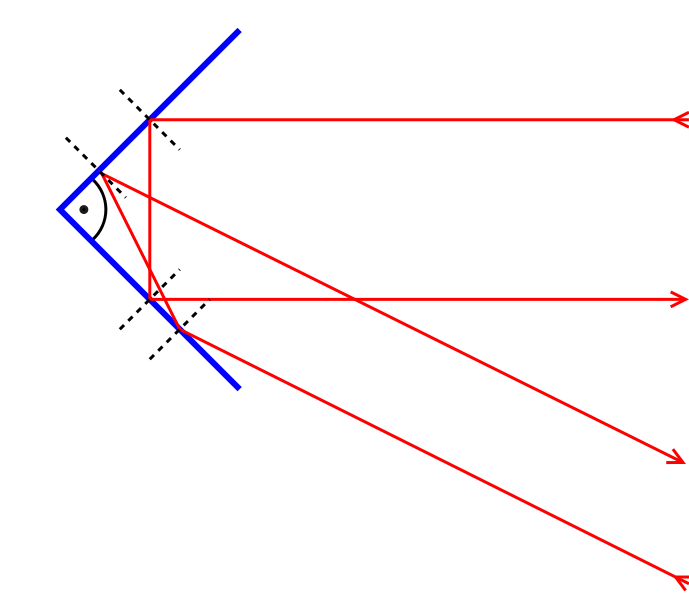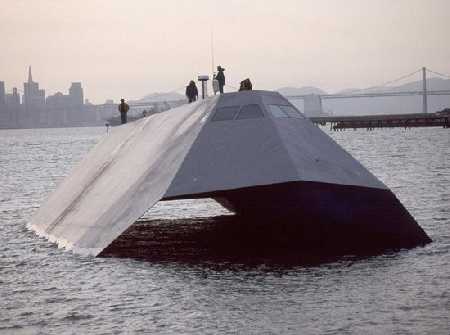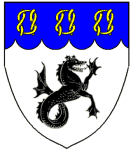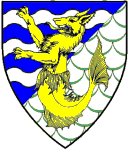| View previous topic :: View next topic |
| Author |
Message |
marco422
Joined: 25 Sep 2008
Posts: 103
City/Region: Salt Spring Island
State or Province: BC
C-Dory Year: 2007
C-Dory Model: 16 Cruiser
Vessel Name: Gaiasika
Photos: Gaiasika
|
 Posted: Sat Feb 07, 2009 12:19 pm Post subject: Posted: Sat Feb 07, 2009 12:19 pm Post subject: |
 |
|
[quote="Anna Leigh"]
If you are traveling in or through Canadian waters they are required. Although I don't know what they do to enforce it. I guess if you have an incident that gets investigated you better have one.
[/quote]
It's not quite that draconian:
Rule 40 Collision Regulations, Canada Shipping Act 2001 requires a vessel that is less than 20 metres in length or is constructed primarily of non-metallic materials to be equipped with a radar reflector if practicable, unless (i) it operates in limited traffic conditions, daylight, and favourable environmental conditions and where compliance is not essential for the safety of the vessel, or (ii) the small size of the vessel or its operation away from radar navigation makes compliance impracticable. |
|
| Back to top |
|
 |
journey on
Joined: 03 Mar 2005
Posts: 3595
City/Region: Valley Centre
State or Province: CA
C-Dory Year: 2005
C-Dory Model: 25 Cruiser
Vessel Name: journey on
Photos: Journey On
|
 Posted: Sat Feb 07, 2009 12:49 pm Post subject: Posted: Sat Feb 07, 2009 12:49 pm Post subject: |
 |
|
As far as the amount of signature increase a radar reflector shows, let's look at the Davis reflector, which is 11.5" in dia. This is slightly less than 1 sq. ft., MAX. and if it's not pointed with one of the panels perpendicular to the radar beam, can go down to ~1/2 sq. ft.
Now a reflector just reflects energy, it can't increase it beyond what it intercepts, so the MAX reflected radar signal is equal to a 1 sq. ft. target, at the appropriate range. Now compare that with a metal ship that's 50' high by 40' wide by 300' long with lots of metal things sticking out (bridges, etc.)
I do not believe that a small reflector can give the same return signal as a big (or even small) metal ship at the same range. No matter how you look at a ship, one can't get the cross-sectional area down to 1 sq. ft.
That's why I feel the best radar signal is from the radar on your boat. YOU can see the big guys quickly, and can take the appropriate action quickly. I also feel the cheapest radar you can get is the best safety investment for your boat.
Boris |
|
| Back to top |
|
 |
marco422
Joined: 25 Sep 2008
Posts: 103
City/Region: Salt Spring Island
State or Province: BC
C-Dory Year: 2007
C-Dory Model: 16 Cruiser
Vessel Name: Gaiasika
Photos: Gaiasika
|
 Posted: Sat Feb 07, 2009 1:18 pm Post subject: Posted: Sat Feb 07, 2009 1:18 pm Post subject: |
 |
|
[quote="journey on"]As far as the amount of signature increase a radar reflector shows, let's look at the Davis reflector, which is 11.5" in dia. This is slightly less than 1 sq. ft., MAX. and if it's not pointed with one of the panels perpendicular to the radar beam, can go down to ~1/2 sq. ft.
Now a reflector just reflects energy, it can't increase it beyond what it intercepts, so the MAX reflected radar signal is equal to a 1 sq. ft. target, at the appropriate range. Now compare that with a metal ship that's 50' high by 40' wide by 300' long with lots of metal things sticking out (bridges, etc.)
I do not believe that a small reflector can give the same return signal as a big (or even small) metal ship at the same range. No matter how you look at a ship, one can't get the cross-sectional area down to 1 sq. ft.
Boris[/quote]
I think you are looking at it too simplistically. Radar reflections are a very complicated matter and have to compete with sea clutter at short ranges. A typical octohedral reflector has an RCS (radar cross section) anywhere from 2 to 10 square metres depending on heel and dips in its profile. It doesn't have to be facing the radar transmitter, the signal is reflected within the corners back to its source. A ship's side, on the other hand has to be directly facing the radar to reflect properly. The ship's signal is more likely to come from all the angled surfaces above the deck line than the hull itself.
The point of a radar reflector may be to provide a minimal consistent reflection that distinguishes a fibreglass boat from sea clutter at short ranges (2-10 miles). Of course, the attentiveness and superior maneuverability of a small boat operator is going to be far more effective in collision avoidance than dependence on the radar operator on a seagoing vessel. |
|
| Back to top |
|
 |
rogerbum
Joined: 21 Nov 2004
Posts: 5922
City/Region: Kenmore
State or Province: WA
C-Dory Year: 2008
C-Dory Model: 255 Tomcat
Vessel Name: Meant to be
Photos: SeaDNA
|
 Posted: Sat Feb 07, 2009 2:30 pm Post subject: Posted: Sat Feb 07, 2009 2:30 pm Post subject: |
 |
|
| journey on wrote: | As far as the amount of signature increase a radar reflector shows, let's look at the Davis reflector, which is 11.5" in dia. This is slightly less than 1 sq. ft., MAX. and if it's not pointed with one of the panels perpendicular to the radar beam, can go down to ~1/2 sq. ft.
Now a reflector just reflects energy, it can't increase it beyond what it intercepts, so the MAX reflected radar signal is equal to a 1 sq. ft. target, at the appropriate range. Now compare that with a metal ship that's 50' high by 40' wide by 300' long with lots of metal things sticking out (bridges, etc.)
I do not believe that a small reflector can give the same return signal as a big (or even small) metal ship at the same range. No matter how you look at a ship, one can't get the cross-sectional area down to 1 sq. ft.
That's why I feel the best radar signal is from the radar on your boat. YOU can see the big guys quickly, and can take the appropriate action quickly. I also feel the cheapest radar you can get is the best safety investment for your boat.
Boris |
Boris,
The radar reflectors are so called corner cube reflectors - e.g. when you look into a given 1/8 of the sphere, it's essentially the corner of a cube. Corner cube reflectors have the special property that light (or microwaves) which goes into them comes back out in the same direction from which it entered.
 . .
This is a much more effective reflector than a similar surface area that is often not directly perpendicular to the signal.
_________________
Roger on Meant to be |
|
| Back to top |
|
 |
starcrafttom
Joined: 07 Nov 2003
Posts: 7882
City/Region: marysville
State or Province: WA
C-Dory Year: 1984
C-Dory Model: 27 Cruiser
Vessel Name: to be decided later
Photos: Susan E
|
 Posted: Sat Feb 07, 2009 5:40 pm Post subject: Posted: Sat Feb 07, 2009 5:40 pm Post subject: |
 |
|
Last year my father picked up a radar signal booster. It take a signal that is pointed at it, reads and amplifies it and then sends it back at a higher power there by making you look bigger or more to the point sends a stronger signal that may not other wise be seen at long distance or in big seas. We have not had time of the place to put it to a test yet but its a neat idea.
_________________
Thomas J Elliott
http://tomsfishinggear.blogspot.com/ |
|
| Back to top |
|
 |
journey on
Joined: 03 Mar 2005
Posts: 3595
City/Region: Valley Centre
State or Province: CA
C-Dory Year: 2005
C-Dory Model: 25 Cruiser
Vessel Name: journey on
Photos: Journey On
|
 Posted: Sat Feb 07, 2009 6:58 pm Post subject: Posted: Sat Feb 07, 2009 6:58 pm Post subject: |
 |
|
Actually the way a radar works is pretty simple. It sends a beam of energy out, some of that energy is reflected back, and the time of flight is measured and there you have it, distance. Implementing that is complicated, though.
Well, a radar transmits RF energy from its antenna, which is designed to aim that energy in as tight a beam as possible. That is the only energy the radar has to work with. The only energy the receiver will see is that which is transmitted from that radar and reflected back via some conducting target, (typical boat radar, I don't speak for the whole DoD world.) Think of a mirror reflecting a flashlight beam.
This electric field energy is measured like the surface of an expanding bubble, in watts/sq. cm. And this bubble surface keeps expanding as the distance increases, which means the watts/sq. cm decreases as the square of the distance increases, because we're dealing with the bubble surface, not the radius.
Now as the electric field travels away from the radar antenna, objects get in its way and if it's a conducting surface reflects the energy equal to its surface perpendicular to the travel of the radar pulse electric field. This is the MAXIMUM it can reflect. That's the total signal the radar receiver gets back at its antenna. Of course, the return energy has some expanding surface, but to provide an upper bound, let's say all the reflected energy gets back to the radar.
For a perfect 1 sq. ft. reflector, that reflected energy is the total energy that hits the target and is reflected. It's in the microwatt range, and I'm impressed how well radar works.
So, whatever the type of reflector, it can't catch and reflect the radar's transmitted power outside of it's cross-sectional area. So if its maximum dimension is a 1' diameter, it can't reflect the same power as an object with 2 or 3 sq. ft. of area. It's physically impossible.
And, yes corner reflectors can turn a signal around. That's because the angle of the two reflecting surfaces always equal 180 deg. And the energy ALWAYS has to be reflected 180 deg, cause that's where the radar is. But it can't reflect energy that's outside it's projected cross-section. And If you turn a iron sheet edge on to the radar, it will not reflect any signal back. I feel that a large iron ship will reflect more that 1 sq. ft. worth of energy, is all I'm saying.
So, I don't know how a small reflector can reflect as much energy as something much bigger, unless the bigger thing is turned sideways. And that can always happen, but I don't think it's relevant to this discussion. All we're trying to do is set an UPPER bound on the reflected energy.
As far as transponders go, they create their own energy and thus amplify the radar's signal. One can find that on sea bouys, which actually provide their location and name. I'm not aware of any in my price range, but they do have them for aircraft.
Sea clutter is reflected energy from the ocean surface, and is treated as noise. Modern radars try to filter it out, based on it's random properties. But I agree it's noise, and the target signal need to be picked out from that. However, it has nothing to do with the amount of energy a reflector reflects.
Again, I wouldn't count on a small radar reflector letting that tanker or ferry being able to see you in the sea clutter, and then avoid you. A Furuno 1623 LCD Radar is 1300 bucks, let's you see the danger and take corrective action. If you operate in fog or at night, it's the best saftey device you can have. Oh, that and your depth sounder.
That's all, Folks
Boris |
|
| Back to top |
|
 |
marco422
Joined: 25 Sep 2008
Posts: 103
City/Region: Salt Spring Island
State or Province: BC
C-Dory Year: 2007
C-Dory Model: 16 Cruiser
Vessel Name: Gaiasika
Photos: Gaiasika
|
 Posted: Sat Feb 07, 2009 8:42 pm Post subject: Posted: Sat Feb 07, 2009 8:42 pm Post subject: |
 |
|
As I said before, while the basic theory is fairly simple, the details are complex. Radar reflections are measured by RCS which is an equivalent reflection from a conductive sphere of a certain cross-sectional area. So to say something has an RCS of 5 square metres doesn't mean it reflects as much energy as a flat plate of that area facing the radar transmitter. But a sphere would be a very approximate equivalent of a real world object with all its angled surfaces. So when we say that a reflector has an RCS of 5 sqm it is approximately the same as the average reflection from a metal boat about 5 metres long by 1 metre high.
Of course the reflection from the boat will vary widely depending on its attitude, just like that of the radar reflector. So the number gives us a false sense of exactitude because the signal will vary by very large amounts in both cases (as shown even in several of the test reports found on the Internet which were done in test chambers rather than at sea).
The reason I mention sea clutter is not because it affects the returning signal but it provides a background from which our reflector's signal must be differentiated. Sea clutter will vary depending on sea state, angle of wave faces at various distances from the radar unit, etc and is going to be staccato. Hopefully our boat or reflector will provide a more consistent signal so that the radar processor and the operator can distinguish it.
The reason I say that radar reflections are complex (despite the simple theory you outlined) is that there are many diffraction effects caused by corners, hidden parts of the target and target materials that complicate things. I think the article in Wikipedia about radar cross section mentions some of them.
Nothing in the real world seems to comply with simple mathematical models, so your intuitive assessment is probably just as useful. |
|
| Back to top |
|
 |
thataway
Joined: 02 Nov 2003
Posts: 20813
City/Region: Pensacola
State or Province: FL
C-Dory Year: 2007
C-Dory Model: 25 Cruiser
Vessel Name: thataway
Photos: Thataway
|
 Posted: Sat Feb 07, 2009 8:51 pm Post subject: Posted: Sat Feb 07, 2009 8:51 pm Post subject: |
 |
|
I certainly agree with Boris, that a radar on your vessel beats any passive reflector. Of course we now have AIS, and that is probably one of the best safety features which has come along in quite some time.
I am curious as to what Radar Transponder Tom has. Active Echo is one commercially available, ACR and Weems Plath both have emergency transponders designed for SAR and lifeboats.
The Lense type of radar reflectors, do better than the 90 degree spherical or square aluminum reflectors. Either of these, is susposed to assure that the radar energy comes back at maximum intensity from the reflector. Even a steel ship may not bounce radar microwaves back at max intensity, because the ship is not perpendicular to the beam.
We often asked ships how far away they could see us. The vessel was 62 feet LOA, and afiberglass hull, with two wooden masts, and round rigging--not a lot of metal which would be reflective above the water. The engine and water tanks were below the water line. There was some metal--such as stoves, refigeration plates and batteries which were above the water line. However, the radar signal was definately enhanced by one of the lense reflectors--which was up in the rigging (in that case about 40 feet above the water. Ships with good radar would regularly see us at a range of 13 miles--far more than just what would have been seen for the hull alone.
Last summer when we were crossing San Francisco bay, I kicked the Radar on to see if I could track the other C Dories. We were farily close, but I could see all of the boats (no reflectors) fairly easily. There is thread about seeing lobster pots on radar (calm water) on recreational boats on The hull truth. Most radar operators claim that they can see 5" lobster pots, and birds.
_________________
Bob Austin
Thataway
Thataway (Ex Seaweed) 2007 25 C Dory May 2018 to Oct. 2021
Thisaway 2006 22' CDory November 2011 to May 2018
Caracal 18 140 Suzuki 2007 to present
Thataway TomCat 255 150 Suzukis June 2006 thru August 2011
C Pelican; 1992, 22 Cruiser, 2002 thru 2006
Frequent Sea; 2003 C D 25, 2007 thru 2009
KA6PKB
Home port: Pensacola FL |
|
| Back to top |
|
 |
rogerbum
Joined: 21 Nov 2004
Posts: 5922
City/Region: Kenmore
State or Province: WA
C-Dory Year: 2008
C-Dory Model: 255 Tomcat
Vessel Name: Meant to be
Photos: SeaDNA
|
 Posted: Sat Feb 07, 2009 9:12 pm Post subject: Posted: Sat Feb 07, 2009 9:12 pm Post subject: |
 |
|
| journey on wrote: | <stuff clipped>
So, I don't know how a small reflector can reflect as much energy as something much bigger, unless the bigger thing is turned sideways<emphasis added>. And that can always happen, but I don't think it's relevant to this discussion. All we're trying to do is set an UPPER bound on the reflected energy.
<stuff clipped>
Boris |
It doesn't need to be turned sideways, it just needs to be turned at a slightly oblique angle. For any given vessel, a very small fraction of the reflective surface area is perpendicular to an incoming beam and hence only a very small fraction gets reflected back to the receiver. The advantage of the corner cube is that a large percentage of the incoming beam that hits the cube gets reflected back. Hence, in practice, the corner cube radar reflector has a return that is larger than an much larger mis-oriented reflective surface. As they say, in theory, theory and practice are the same but in practice, they differ. |
|
| Back to top |
|
 |
Sea Wolf
Joined: 01 Nov 2003
Posts: 8650
City/Region: Redding
State or Province: CA
C-Dory Year: 1987
C-Dory Model: 22 Cruiser
Vessel Name: Sea Wolf
Photos: Sea Wolf
|
 Posted: Sat Feb 07, 2009 11:10 pm Post subject: Posted: Sat Feb 07, 2009 11:10 pm Post subject: |
 |
|

HOW TO MINIMIZE YOUR RADAR SIGNATURE TO OTHER BOATERS...
We encountered this Navy Stealth Research Vessel on the Alameda Naval Air Station nook of S.F. Bay in 1993 while practicing racing sailing techniques.
This was one of the first days they had taken the stealth boat out on the bay. Before that, it had been tested in a test chamber / closed in building over in Redwood City.
One look and we knew it was a stealth boat, looking much like the F-117A stealth fighter, or a Star Wars movie prop.
It illustrates many of the points made in the discussion in the posts above.
Joe.  
_________________
Sea Wolf, C-Brat #31
Lake Shasta, California
  
"Most of my money I spent on boats and women. The rest I squandered'. " -Annonymous |
|
| Back to top |
|
 |
matt_unique
Joined: 27 Feb 2007
Posts: 1881
City/Region: Boston
State or Province: MA
C-Dory Year: 2007
C-Dory Model: 255 Tomcat
Vessel Name: Napoleon
Photos: Napoleon
|
 Posted: Sun Feb 08, 2009 9:25 am Post subject: Reflectivity Posted: Sun Feb 08, 2009 9:25 am Post subject: Reflectivity |
 |
|
| journey on wrote: | .... So if its maximum dimension is a 1' diameter, it can't reflect the same power as an object with 2 or 3 sq. ft. of area. It's physically impossible.
.... |
Perhaps I'm missing this from another part of your post but of course the reflectivity of the material is what makes the difference. A navigation buoy for example returns a much stronger and larger signal than a 19' fiberglass boat, even though the physical size of the buoy is much smaller than that of the boat.
I have been amazed at how small a return some fiberglass boats provide, even 30' boats.
_________________
Captain Matt
Former owner of Napoleon (Tomcat) Hull #65 w/Counter Rotating Suzuki 150's. |
|
| Back to top |
|
 |
Alyssa Jean
Joined: 02 Nov 2003
Posts: 2375
City/Region: Guemes Is.(Anacortes)
State or Province: WA
C-Dory Year: 2005
C-Dory Model: 16 Angler
Vessel Name: Alyssa Jean
Photos: Anna Leigh and Alyssa Jean
|
 Posted: Sun Feb 08, 2009 9:36 am Post subject: Posted: Sun Feb 08, 2009 9:36 am Post subject: |
 |
|
The whole point of a reflector is to make you appear larger on another vessels radar than you would without one. They work, so I use one.
_________________
David and Kate
Alyssa Jean 16 Angler
Anna Leigh 22 Cruiser Sold 2005
Anna Leigh 25 Cruiser Sold 2014
K7KJR C-Brats #51 |
|
| Back to top |
|
 |
Sea Angel
Joined: 29 Dec 2003
Posts: 736
City/Region: Virginia Beach, VA
State or Province: VA
Photos: Sea Angel
|
 Posted: Sun Feb 08, 2009 7:16 pm Post subject: Posted: Sun Feb 08, 2009 7:16 pm Post subject: |
 |
|
I question of application comes to mind...
Could we take AL duct tape and cut it to the 'S' and 'X' band radar wave
lengths and set a design within the cabin's inside walls for it to act as
[mulitple] dipoles?
In theory it seems that it should work; especially, if you had a shower
within the cabin to apply the tape to [for cosmetic purposes] .
Art
_________________
Art ka1rx
CBRAT #208
2005 CD25 #075 SEA ANGEL (SOLD)
USCGAUX (RET), USN(RET)
Broadcast TV ENG(RET)
ka1rx@verizon.net
SKYPE: Art.Bartlett4 |
|
| Back to top |
|
 |
thataway
Joined: 02 Nov 2003
Posts: 20813
City/Region: Pensacola
State or Province: FL
C-Dory Year: 2007
C-Dory Model: 25 Cruiser
Vessel Name: thataway
Photos: Thataway
|
 Posted: Sun Feb 08, 2009 8:26 pm Post subject: Posted: Sun Feb 08, 2009 8:26 pm Post subject: |
 |
|
There would be no correlation with reflection of radar microwaves and cut lengths of foil--they wold make a good receiver antenna, but not a reflector.
If you lined the boat with foil--it still might not be as good a reflector as a multi faceted true 90 degree ball--where all microwaves which hit the reflector, are sent back to the scanner antenna.
Often when you get echos off fiberglass boats, it is flat pieces of metal in the boat--engine block, tanks, stoves etc. |
|
| Back to top |
|
 |
Anita Marie
Joined: 01 Nov 2003
Posts: 826
City/Region: Oak Harbor
State or Province: WA
C-Dory Year: 2005
C-Dory Model: 25 Cruiser
Vessel Name: Anita Marie
Photos: Anita Marie and Little Buddy
|
 Posted: Sun Feb 08, 2009 8:37 pm Post subject: Posted: Sun Feb 08, 2009 8:37 pm Post subject: |
 |
|
| Radar Flag |
|
| Back to top |
|
 |
|
|
You cannot post new topics in this forum
You cannot reply to topics in this forum
You cannot edit your posts in this forum
You cannot delete your posts in this forum
You cannot vote in polls in this forum
You cannot attach files in this forum
You cannot download files in this forum
|
|

 Search
Search Private Messages
Private Messages Profile
Profile Log in
Log in Register
Register Help
Help

 .
.





